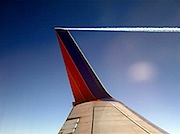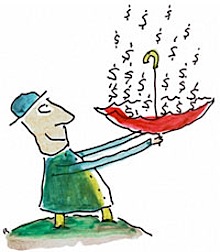
I’ve had a couple of emails this morning from readers wondering why Southwest Airlines’ shares, which rose yesterday on the news that the airline was essentially shutting down the growth faucets, are now moving in the opposite direction today.
As of this posting, shares of Southwest have lost 17% for the day, now trading around 8.10 a share, down from their close yesterday of 9.81.
So what gives?
Simple. The market reacted positively yesterday to the headline news: growth being curbed.
Today, investors have had more time to think about the rest of the news the airline gave us yesterday. And, investors have also had the benefit of a number of airline analyst research notes on the results.
From Gary Chase, analyst with Barclays:
…LUV results were better than we expected, largely on better passenger revenue performance. Non-fuel costs came in a touch better, but remain under pressure. We expect LUV will benefit from industry capacity reductions and lower fuel prices, but don’t see nearly as compelling an opportunity in LUV shares as we see in other names…….2009 estimate is reduced from $0.65 to $0.45, principally on lower passenger revenue assumptions.We’ve been modeling RASM out-performance for LUV relative to other LFCs and the industry at-large given its revenue initiatives, but think it will be increasingly difficult for the company to outperform the industry to that extent given economic slowing.”
From Kevin Crissey, UBS Securities:
…”Our view on the stock
We view LUV’s valuation as getting stretched. It is trading at we view as an ‘okay’ 6x 2009 EV/EBITDAR but a robust 16x our 2009 EPS estimate. With growth non-existent, unit costs rising, economic fuel prices above peers and the balance sheet okay but less impressive, we question whether there is upside potential to valuation from here. We are cautious on LUV and rate it Neutral…”
From Ray Neidl, Calyon Securities:
“We believe investors should take profit,” Neidl said in a research note this morning as the firm dropped its target price on the shares from $8 to $7. The firm also cuts its rating on the stock from underperform to “sell.”
When was the last time we saw a “sell” rating on shares of Southwest?






